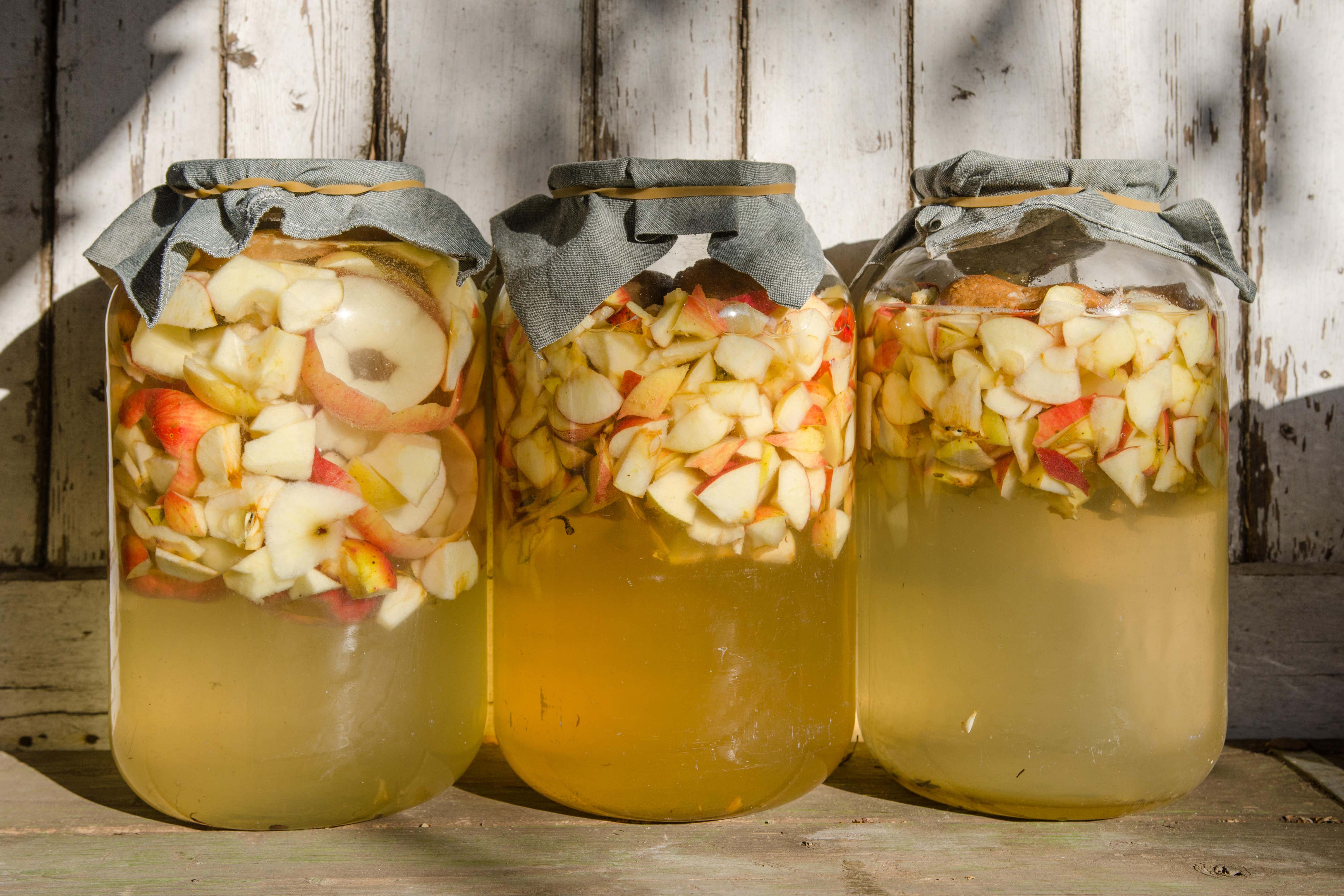How to preserve your apple harvest
Cook, freeze, pickle and dehydrate your apples to make them last longer.

Anyone who finds themselves with a glut of apples this autumn can reap the rewards by preserving them so they can be eaten over the coming year.
Dried, pickled, frozen or pressed, there are endless options for sweet and savoury apple concoctions, says organic gardener, award-winning writer and cook Stephanie Hafferty, author of The Creative Kitchen, who has a homestead in Ceredigion, Wales.
As a series of Apple Days are held around the country over autumn, she enthuses: “Apples really are incredibly versatile fruits and at this time of year they are pretty much everywhere, and in a lot of community gardens.”
Here, she offers ideas on how to preserve apples to see you through the coming months.
Apple cider vinegar
Fill a Kilner jar or similar three-quarters full with the core, peel, apple scraps (but not the bruised bits or rot) and chopped apple from unblemished windfall apples or those you’ve grown yourself, and top it up with water. Place a weight on it to keep the fruit down. Cover glass jars with muslin to keep out fruit flies but allow the air in to help fermentation.
A cider mother – the wobbly jelly-like thing comprising a culture of beneficial bacteria that transforms apple cider into vinegar – will form on the top over time, Hafferty explains.
The fermentation takes around two to four months, and once it’s ready, strain the vinegar into bottles which will cope with it being slightly fizzy, she adds.
“I use apple cider vinegar for making other preserves like chutneys and pickles, because it’s a light vinegar which doesn’t overwhelm the flavour like a malt vinegar can.
“I also use it to make a shrub, a traditional vinegar fruit drink which is quite sweet, as you add maybe sugar or honey to it. At this time of year, you’d use elderberries or blackberries to make the shrub. Pour it into a mug in winter with some hot water and it’s really good if you are feeling under the weather.”
Dehydrated snacks
Peel, core and finely slice apples before dehydrating them. Many air fryers come with a dehydration setting, she says.
“Spread little apple rings in your dehydrator or in a low oven and wait until they are dry. There are two levels – one is still a bit chewy, which is lovely for snacking on; the other reaches the next stage of dryness, so they are a bit crunchy, like apple crisps. They are delicious with a bit of ginger and cinnamon on them.”
The chewy apples are great added to Christmas fruitcake, she suggests.
Apple leather
Cook some apples to make apple sauce and spread it on to greaseproof paper on a tray, then put it in a dehydrator or an air fryer with a dehydration setting or a conventional oven on a very low temperature.
After a few hours, depending on the thickness of your apple sauce layer and your oven temperature, you’ll end up with a thin, chewy, leather-like snack which tastes of apple. Keep it in a clean storage jar, she says.
Chutney
“A basic apple chutney is very easy to make and goes with so many different things, using whatever dried fruit you have in the cupboard, onions, spices and a light brown sugar for depth of flavour. You can use apple cider vinegar in the process,” she says.
“Always use a tried and tested recipe, because with preserving you want to make sure it is going to keep. It should keep for about a year. I use recipes by Delia Smith and by ‘Pam the Jam’ Pam Corbin.”
Apple jelly
“With this, you can use crab apples because they are high in pectin, which is what makes it set. Alternatively, you can buy sugar with pectin in or a packet of pectin which will help make an apple jelly set. Add fresh mint from the garden to go with your winter roasts.”
Freezing apples
Cook down your apples to make them into apple sauce and freeze small batches to bring out with pork dishes, she suggests.
Preserving through winter
The easiest way to save raw apples through the winter is to check them regularly to make sure they are perfect, she says.
Pick them, wrap them individually in newspaper to make sure they are not touching, and store them in a cool, dark, airy place in a dry cardboard box that you might pick up at a supermarket, she suggests.
Check them regularly to make sure they’re not showing any signs of disease and remove any that are on the turn.
Sterilise jars
Wash your jars thoroughly in soapy hot water using a bottle brush, then rinse in very hot water before putting the jars in a low oven. Put lids in a jug of boiling water from the kettle to sterilise them, she advises.